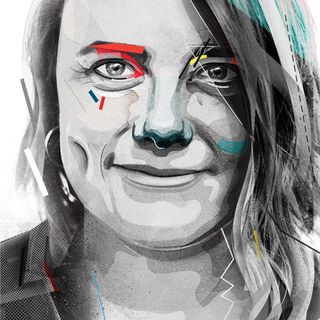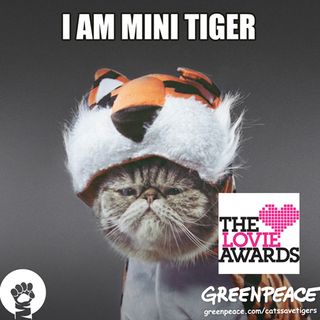Why tackling gender imbalance could have an unexpected outcome
The creative industries are among the least diverse, but we can change this - and everyone will benefit.
Former D&AD president Laura Jordan Bambach is a creative partner at independent creative agency Mr President and co-founder of SheSays, a community to champion women in creative industries. She explains how equality in design can lead to better work all-round...

Prime Minister David Cameron has vowed to eliminate the gender pay gap in the UK.
The government is bringing forward rules to make firms with more than 250 workers reveal their average pay per gender, after only five of 270 businesses currently signed up to 2014's pay disclosure scheme 'Think Act Report' reported publicly on their pay gap.
Within the advertising industry the IPA is championing a similar sharing of agency wage figures as a way of drawing attention to the direct and indirect discrimination, which means that the gender pay gap is still an issue.
Almost 50 years ago, the Dagenham machinists led a strike that sparked the Equal Pay Act in 1970. But women still earn less than men in Britain. The gender pay gap stands at 19.1 per cent (2014). We are above the EU average of 16 per cent.
Flush out equality
Whereas other areas of employment opportunity for women have opened up, the pay gap has remained largely unchanged over the last 20 years – providing a clear and dramatic example of the economic inequality and parallel power imbalance that women face.
In the creative industries in the UK the gap is 12 per cent. According to the Office of National Statistics, a man who earns £32k in our industry is paid £3k more than a woman doing the same job.
This direct discrimination is contrary to the Equal Pay Act, and measures such as those proposed will help flush this out.
But the gender equality conversation is a complicated one, with many contributing factors. There is a lot of contradictory research, and editorial, as to its causes and importance. Even its existence.
And we have an even bigger problem in creative businesses, particularly in design, tech and advertising creative. We have one of the most unbalanced ratios of men to women of any industry. For example, only 8 per cent of creative directors in the UK are women.
Whose fault is it?
And it's not just at the top. Though students of art, design, advertising and related courses are roughly 50/50, that drops immediately in the workplace to around 60/40. And continues to fall steadily. We are one of the least diverse industries across gender, race, class and disability.
There's been a lot of debate, particularly online, over whose 'fault' this is. We hear that women 'choose' to work part-time or take less demanding roles, that biology takes over and they are overcome by the desire to have children; that if women aren't paid as much it's because they aren't as good – because our industry is of course based completely on merit. The blame game goes on.
But instead of throwing blame, we should be looking at what we can all do within our own studios and agencies to eradicate not just the pay gap, but the gender imbalance.

At Mr President, we know that having a balanced workforce makes great business sense. A diversity of experiences within the agency means more interesting ideas, and better problem solving. We have a good balance of men and women across the board, because we've shaped our agency around treating all of our staff like grown-ups.
We believe in the importance of doing things outside of work, whether that's writing a blog, taking time to follow your passion for sports or your kids.
Balancing design
And we treat all our parents in the same way, through things like equal maternity and paternity pay (not just allowances for time). Everyone at Mr President was hired because of their great work; we believe they'll do it even better if they have a life.
We pay all our interns from day one. We have small, senior, collaborative project teams and a flat structure. Everyone is empowered to make decisions and share ideas. The lack of hierarchy means fewer egos and less explosive aggression.
We mentor and develop our women (and men) so they grow in confidence. We have a commitment to never stereotype in our own work – and to use each piece of work to change the dial a little. It means that we stay open and aware of both the client's and our own behaviour.
I'm proud to be part of a business that's doing everything it can to make a change. Are you with us?
Do you have ideas for equalising the industry? Let us know in the comments below...
Liked this? Read these...
- How drawing actually feels with the Apple Pencil
- Top 10 myths about graphic design
- The designer's guide to working from home

Thank you for reading 5 articles this month* Join now for unlimited access
Enjoy your first month for just £1 / $1 / €1
*Read 5 free articles per month without a subscription

Join now for unlimited access
Try first month for just £1 / $1 / €1
Get the Creative Bloq Newsletter
Daily design news, reviews, how-tos and more, as picked by the editors.
The Creative Bloq team is made up of a group of design fans, and has changed and evolved since Creative Bloq began back in 2012. The current website team consists of eight full-time members of staff: Editor Georgia Coggan, Deputy Editor Rosie Hilder, Ecommerce Editor Beren Neale, Senior News Editor Daniel Piper, Editor, Digital Art and 3D Ian Dean, Tech Reviews Editor Erlingur Einarsson, Ecommerce Writer Beth Nicholls and Staff Writer Natalie Fear, as well as a roster of freelancers from around the world. The ImagineFX magazine team also pitch in, ensuring that content from leading digital art publication ImagineFX is represented on Creative Bloq.
